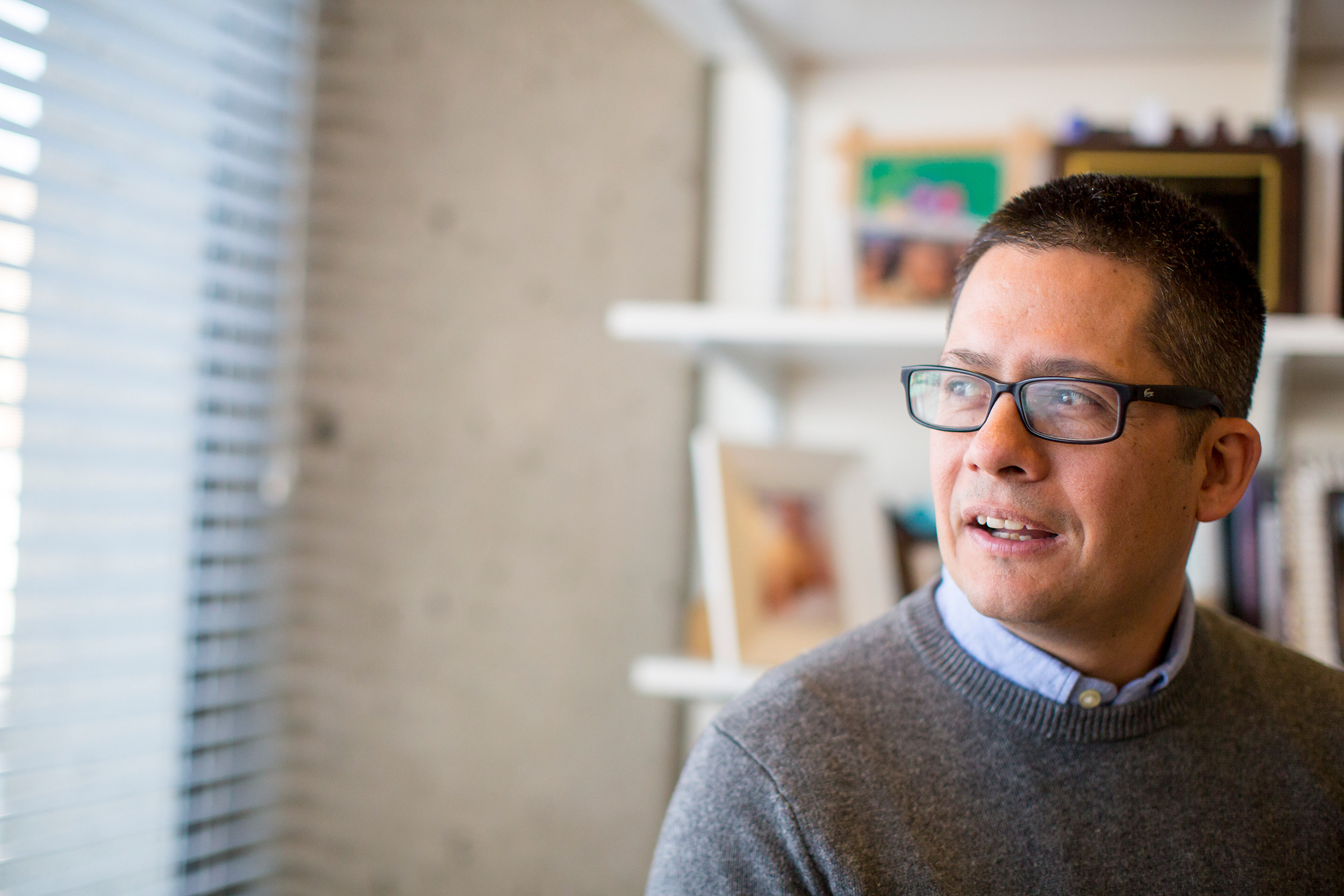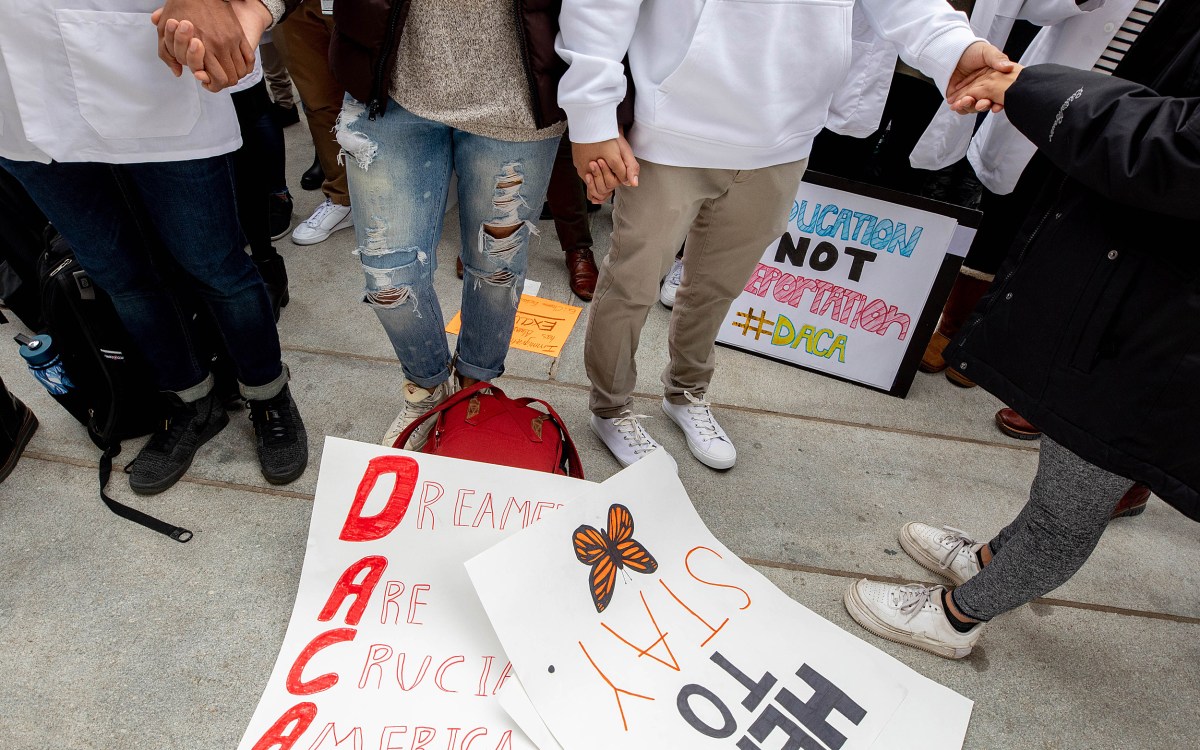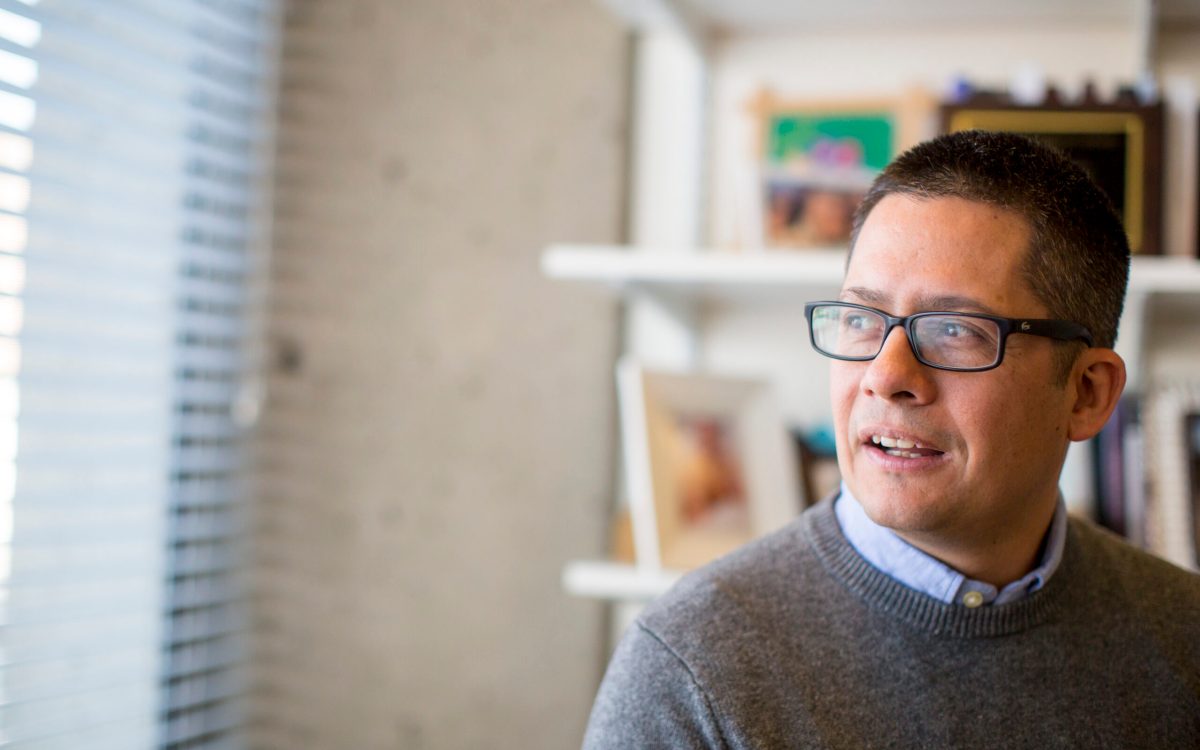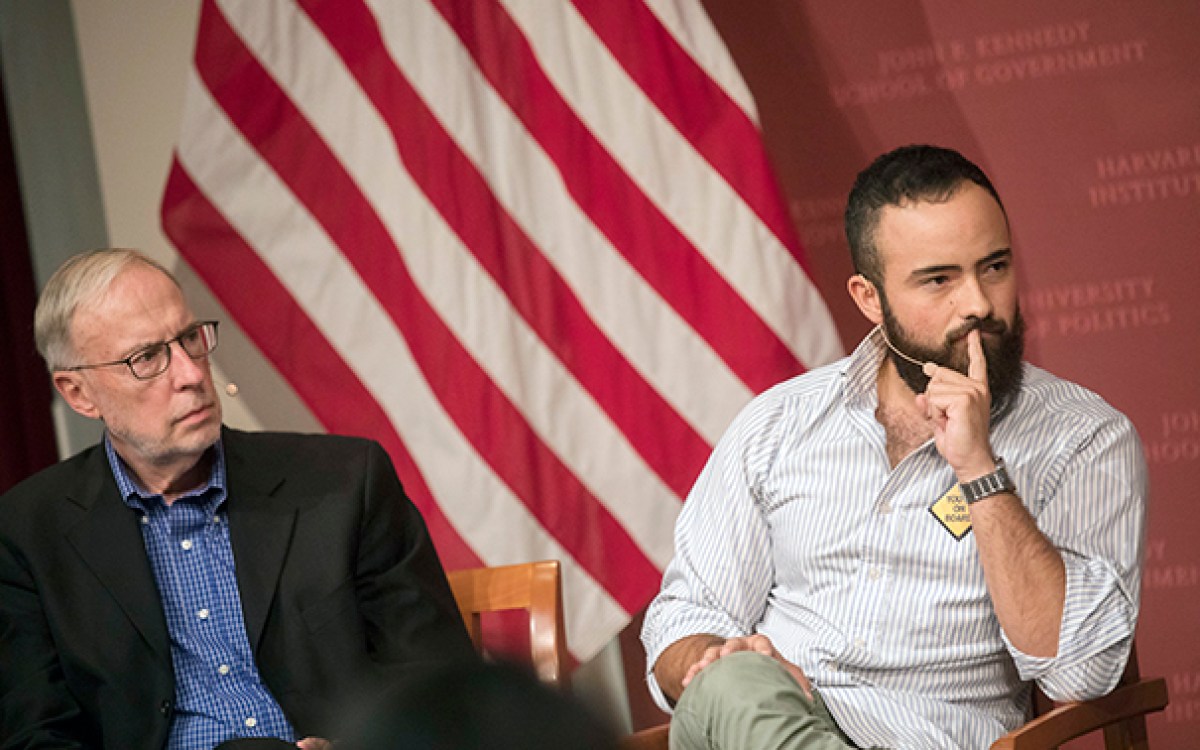
Harvard Professor Roberto Gonzales was the co-author of a new study that surveyed nearly 2,700 young people eligible for the DACA program in 2013.
Rose Lincoln/Harvard file photo
Rise in social mobility of DACA recipients
Study tracks program’s benefits and limitations for undocumented young immigrants
Undocumented young immigrants covered by the Deferred Action for Childhood Arrivals (DACA) policy have seen a rise in social mobility since entering the program, according to a new report by the Immigration Initiative at Harvard. Co-authored by Roberto Gonzales, professor of education at the Graduate School of Education (HGSE), and researchers Sayil Camacho, Kristina Brant, and Carlos Aguilar, the study arrives as the Supreme Court begins hearings over the fate of the program this week. The Trump administration announced plans to end DACA in 2017, and recipients — there are more than 800,000 in the program — sued the government. The Gazette sat down with Gonzales to talk about the report’s findings, DACA’s impact and limitations, and why he thinks it should be kept and expanded.
Q&A
Roberto Gonzales
GAZETTE: Your group followed young undocumented immigrants in DACA, the program that shields them from deportation, for seven years. What was the goal of your study?
gonzales: When President [Barack] Obama announced DACA in 2012, I was at the tail end of a 12-year study following a group of undocumented young adults in Los Angeles. I had spent so much time thinking about how undocumented status thwarted the aspirations and trajectories of these young people, so I jumped at the chance to study the effects of a policy seeking to remedy some of the issues that had narrowly circumscribed their young lives. Simply put, our DACA research sought to understand how young adults were experiencing this new status and how other contexts in their lives were mediating this status. So, we carried out a national survey of young people eligible for the program in 2013, surveying nearly 2,700 respondents. Then we carried out case studies in six U.S. states, and interviewed 408 DACA beneficiaries in 2015, 2016, and then again in 2019.
GAZETTE: And you found that the impact of DACA was overwhelmingly positive. What have been the outcomes in terms of higher education and employment?
gonzales: There are many obvious limitations to an administrative policy that doesn’t provide a pathway to legalization and only benefits a small segment of a much larger population. Nevertheless, I would argue that DACA is the most successful policy of immigrant integration in recent decades. In the short term, DACA provided its beneficiaries newfound opportunities to work, drive, establish credit, access health insurance, and enroll in higher education. With work authorization, they felt more confident to make investments in educational and degree programs. Earning higher wages also helped them to better afford postsecondary education. Over time, they were able to turn these opportunities into tangible career opportunities, finding employment that matched their education and credentials. Our respondents pursued careers in medicine, computer science, architecture, and law. They became teachers and social workers. And they pursued academic careers.
During a Veterans Day rally, hundreds of Harvard students and others proclaimed their support for DACA safeguards.
GAZETTE: What was the most unexpected finding in your report?
gonzales: In my earlier work on undocumented young adults, the biggest surprise was the health consequences of undocumented status. Almost to a person, my respondents described physical and emotional manifestations of stress. It made very clear to me the strong link between undocumented status and strained well-being. With DACA, our respondents were reporting reduced stress in their daily lives and less fear of authorities. We’ve also seen clear differences shaped by the age at which respondents received DACA, with older respondents employing a “dual frame of reference” — they were able to assess their lives under DACA by comparing them to their experiences prior to having that status — and younger respondents who were able to follow more normative adolescent transitions, but were more critical of DACA’s limitations.
GAZETTE: Your study also found that despite the benefits of DACA, its limitations create barriers in the lives of young people. Could you explain what those are and their effects?
gonzales: Some of the more obvious drawbacks to DACA are 1) that it doesn’t provide a pathway to legalization, and 2) that it does not override exclusions from federal financial aid. But another major issue is DACA’s limited reach. More than 800,000 young people have benefited from DACA. But most of these young people are connected to parents and other family members who do not have access to the same protections and access. Many of our respondents have taken on additional responsibilities at home — driving family members to and from work, taking on extra work in order to contribute more substantially to household expenses. Many of our respondents expressed that they were happy to assume these new roles. Nevertheless, this imbalance in power and access to resources created new strains and burdens for young people, now more strongly tethered to their families.
GAZETTE: What kind of future for the more than 800,000 DACA recipients can you envision if DACA is actually terminated? What about the thousands of others who could apply for DACA? What would happen to them?
gonzales: If DACA is eventually terminated without a legislative solution to replace it, it would be a major setback for hundreds of thousands of young people and their families. Over these last seven years, DACA beneficiaries have made tremendous gains in their careers and their well-being. Undoing these gains would have untold consequences on entire communities. For young people who have experienced access to lawful employment, driver’s licenses, and an overall better quality of life, stripping away those rights would be potentially devastating to their mental and emotional well-being. For those coming of age into DACA eligibility — it is estimated that 125,000 undocumented students reach high school graduation age each year — those who have seen older siblings and members of their community experience DACA’s benefits, their futures will be limited to the limited benefits their states and counties might generate through local policies.
GAZETTE: And finally, what are your hopes for the future of DACA as the Supreme Court begins DACA hearings this week?
gonzales: The Supreme Court is ruling on the legality of the Trump administration’s termination of DACA, not the legality of DACA itself. So, if the Supreme Court rules against the Trump administration and preserves DACA, it could still eventually be terminated. But the timeline would push things into an election year, and that might be enough to extend protections and give Congress more time to find a more permanent solution. That would be the most favorable scenario.
This interview has been edited and condensed for clarity and length.








